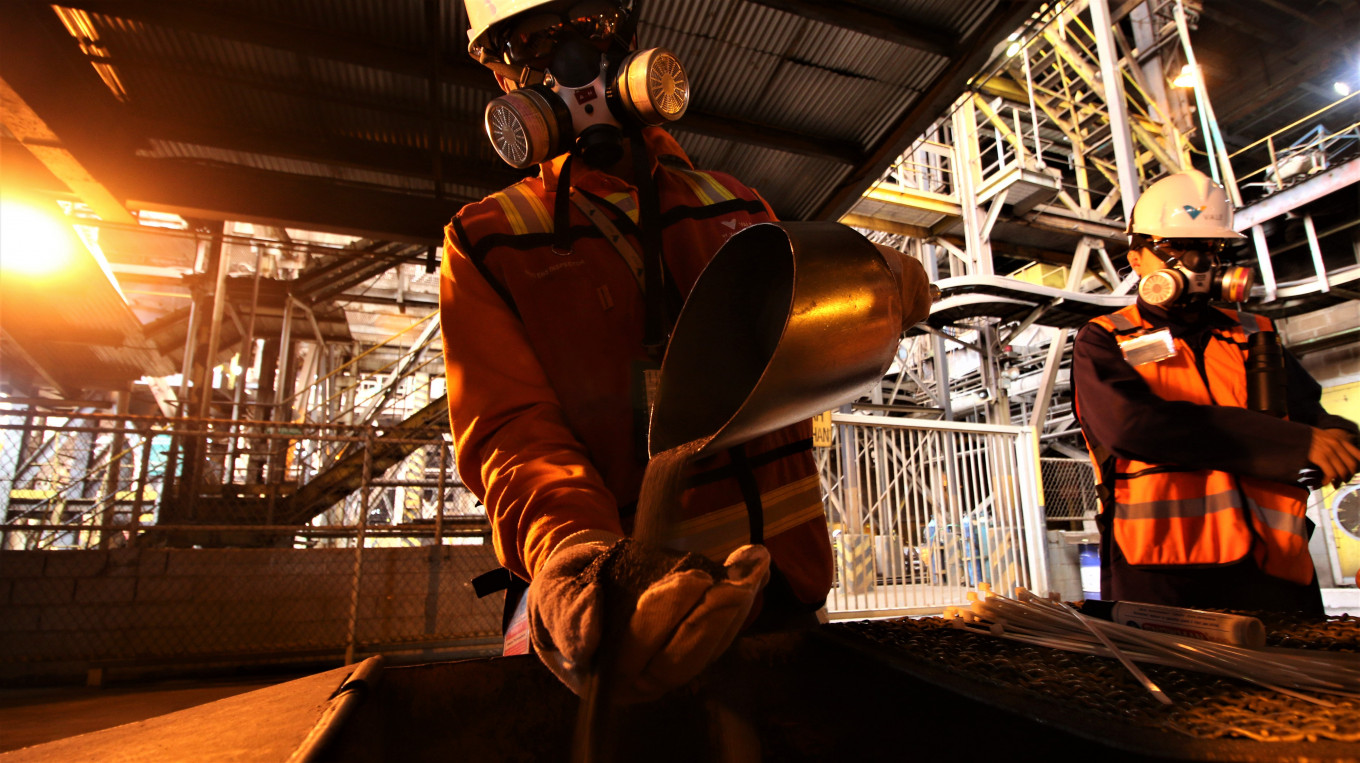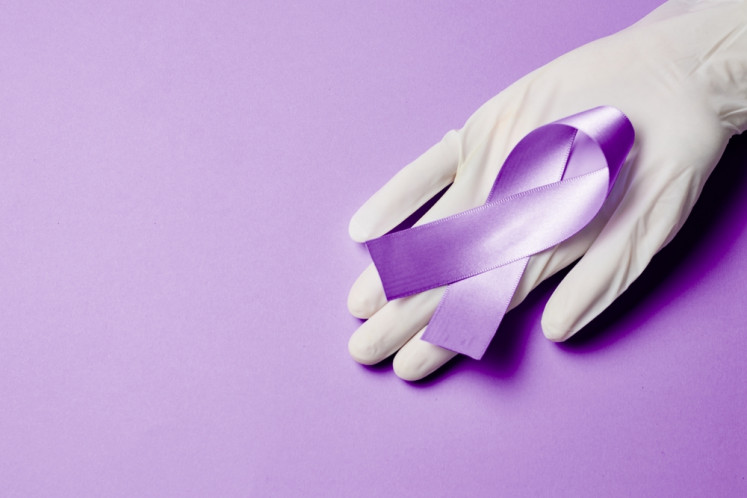Popular Reads
Top Results
Can't find what you're looking for?
View all search resultsPopular Reads
Top Results
Can't find what you're looking for?
View all search resultsIndonesia lacks HPAL smelters to make battery materials
Despite the construction of numerous nickel smelters in Indonesia over the past years, the country lacks facilities to produce electric vehicle (EV) batteries, an Industry Ministry official has explained.
Change text size
Gift Premium Articles
to Anyone
D
espite the construction of numerous nickel smelters in Indonesia over the past years, the country lacks facilities to produce electric vehicle (EV) battery materials, an Industry Ministry official has explained.
More investment in the downstream nickel sector is needed to overcome a lack of high-pressure acid leaching (HPAL) smelters, according to the Industry Ministry’s Metal, Machinery, Transportation Equipment and Electronics Industries Director General Taufiek Bawazier.
HPAL facilities produce mixed hydroxide precipitate (MHP), an intermediate nickel product, as well as nickel sulfate and cobalt sulfate as final products.
Only three nickel processing companies operating in the country had invested in HPAL smelters, Taufiek said on Thursday during a meeting with House of Representatives Commission VII, which oversees energy and technology policy.
However, according to data from the Indonesian Nickel Miners Association (APNI), there were only two operational hydrometallurgy facilities in Indonesia in 2022: one operated by PT Halmahera Persada Lygend (Harita Group) to process 7.82 million tonnes per year and the other by PT Gebe Industri Nickel to process 1.32 million tonnes per year.
"This [industry] needs further development to [address] the situation in order to go further downstream, which requires support from Commission VII, because investment is absolutely needed," he said
Indonesia is the world's largest nickel producer with an output of 1 million tonnes in 2021. However, currently, the country mostly processes nickel ore of the saprolite type. More HPAL smelters would allow for processing more limonite nickel.
Taufiek elaborated that ferronickel still dominated Indonesia’s nickel product exports with a volume of 5.7 million tonnes valued at US$13 billion last year, while exports of hot rolled coil/hot rolled steel (HRC) and cold rolled coil/cold rolled steel (CRC) slabs amounted to $4 billion.
All of those are for the steel industry rather than for batteries.
"We need to deepen [downstream industries] to meet national needs, replace imports and [achieve] exports that generate foreign exchange," he said, adding that this was necessary for the country’s battery factory plans.
“We require a huge quantity of nickel sulfate, a refined product. To meet the needs for batteries by 2035, we will need a supply of at least 59,000 tonnes of nickel sulfate,” he forecast, adding that by 2025 demand would already rise about 20 percent from the current level.
Taufik emphasized the need for electric batteries of different capacities. A two-wheeler, for example, requires a battery with a capacity of 1.44 kilowatt hours (kWh), whereas a four-wheeler might use a 60-kWh battery.
“Each kWh requires 0.77 kilograms of nickel, 0.096 kg of manganese and 0.096 kg of cobalt, [which are] available in Indonesia, but we must import up to 7 percent of the lithium,” said Taufik.
Previously, the Energy and Mineral Resources Ministry announced plans for a moratorium on the construction of nickel smelters employing rotary kiln-electric furnace (RKEF) or pyrometallurgical technology to prepare for the country's dwindling supply of saprolite amid the rising demand.
The government has not yet provided any details on such a nickel smelter ban.
Ahmad Zuhdi Dwi Kusuma, a mining industry analyst at state-owned lender Bank Mandiri, told The Jakarta Post on Friday that the key now was to ensure a sufficient number of HPAL smelters in Indonesia, because the country had more limonite than saprolite.
“However, more saprolite is utilized because of its high nickel content, which makes it easier to process with RKEF [technology], while HPAL hydrometallurgy can process limonite.” Ahmad said.
Based on APNI data, nationwide demand for nickel ore amounted to 187 million tonnes of saprolite and 79 million tonnes of limonite in 2022.
Ahmad suggested that the country not to use up its limonite reserves too quickly by building too many HPAL smelters, so as to preserve reserves and maintain prices.
"If there are more HPAL smelters in the market, the nickel price could drop further, along with the sustainability of our limonite reserves, which would drop like saprolite," Ahmad said.
Ahmad also noted that building HPAL smelters entailed other challenges, including the tailings issue, and a low success rate for HPAL projects globally.
"For example, on Obi Island, before there was an HPAL smelter, people didn't pay for water. Now, however, with the existence of an HPAL smelter, they must buy bath water. Hence, if the tailings are not managed properly, they will reap the surrounding lands,” Ahmad said.










